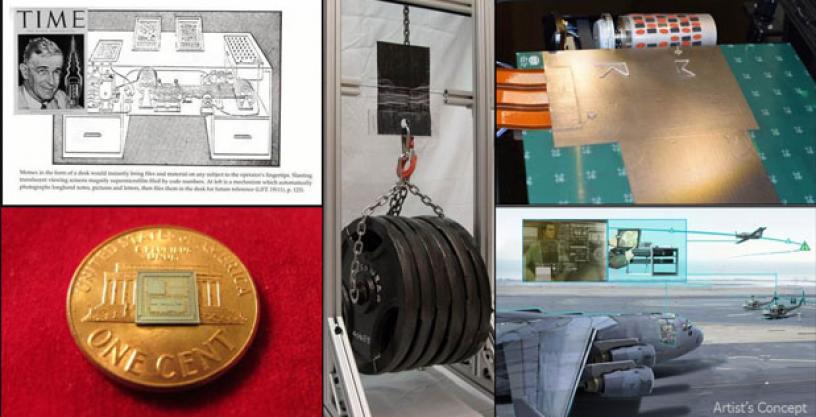
New HO HO HO initiative offers DARPA research to St. Nick to help keep Service members’ and veterans’ morale high during the holiday season
Dec 23, 2014
The holiday season is an important time for military Service members and veterans to enjoy time with their families. Ensuring that the right gifts arrive for the right people on time is key to maintaining morale and force effectiveness. To do its part, DARPA has launched the High-speed Optimized Handling of Holiday Operations (HO HO HO) initiative, which is designed to help Santa Claus and his elves more quickly and efficiently complete their holiday duties.
HO HO HO offers St. Nicholas and his helpers access to research from numerous DARPA programs, including:
- XDATA big data analysis tools and Memex Web indexing and data visualization tools to help Santa determine who is naughty or nice. XDATA is working to create open-source tools to help sift valuable indicators from large datasets cost-effectively, while Memex is working to develop technology to facilitate domain-specific indexing and Web searches, which are helping to identify potential national security threats. DARPA is committed to the proposition that no stocking should be stuffed with coal for lack of an appropriately discriminating data-sorting technology.
- Open Manufacturing’s MicroFactory technology demonstrator to help elves build toys. The MicroFactory uses independent, magnetically controlled micro robots smaller than a fingernail that work together for precision assembly of mechanical-electrical systems. Some of these bug-like robots carry structural components (e.g., structural rods or active electronic elements); others deposit liquids or adhesives; and others serve as inspectors, assessing in real time the accuracy and precision of fabrication. The goal of the MicroFactory is to enable precision assembly of low-cost, macro-scale parts of practically any size with embedded, active functionality. In other words, cool toys that work, batteries included.
- A prototype penny-sized timing and inertial measurement unit (TIMU) from DARPA’s Micro-Technology for Positioning, Navigation and Timing (Micro-PNT) program to help Santa find his way in case Global Positioning System (GPS) signals become unavailable. The Micro-PNT program is working to develop breakthroughs in fabricating miniaturized, self-contained inertial navigation and precision guidance systems orders of magnitude smaller and less expensive than current systems, because the last thing Santa wants to hear on his busiest night of the year is that dreaded pronouncement: “Recalculating ....”
- Initial research from the Aircrew Labor In-Cockpit Automation System (ALIAS) program to help Santa’s sleigh stay on track while he attends to his core mission of delivering toys and good cheer. ALIAS envisions a tailorable, drop-in, removable kit that would allow existing aircraft to operate safely with reduced onboard crew. The program intends to leverage the considerable advances that have been made in aircraft automation systems over the past 50 years, including advances in remotely piloted aircraft automation, to help reduce pilot workload and augment mission performance—especially important for flights that have just one chance a year to succeed.
- Z-man gecko-inspired climbing technology to help Santa more easily travel up and down chimneys. DARPA created the Z-Man program to develop biologically inspired climbing aids to enable warfighters carrying a full combat load to scale vertical walls constructed from typical building materials. The program seeks to overcome the limitations of traditional climbing equipment and deliver maximum safety and flexibility for operating in tight urban environments—even when the fireplace flue is a little tight.
“In pursuing our mission to invest in breakthrough technologies for national security, we’re always on the lookout for nontraditional partners who can help us transition our research to fulfill critical needs,” said a DARPA spokesman, discussing the HO HO HO program on background from DARPA’s northernmost workshop. “We wish all our partners in the technology innovation ecosystem happy holidays.”
# # #
To learn more about DARPA’s work, please visit www.darpa.mil.
Associated images posted on www.darpa.mil and video posted at www.youtube.com/darpatv may be reused according to the terms of the DARPA User Agreement, available here: http://www.darpa.mil/policy/usage-policy.
To follow Santa on his travels Christmas Eve, check with our colleagues at NORAD: www.NORADtrackssanta.org
Tweet @darpa
